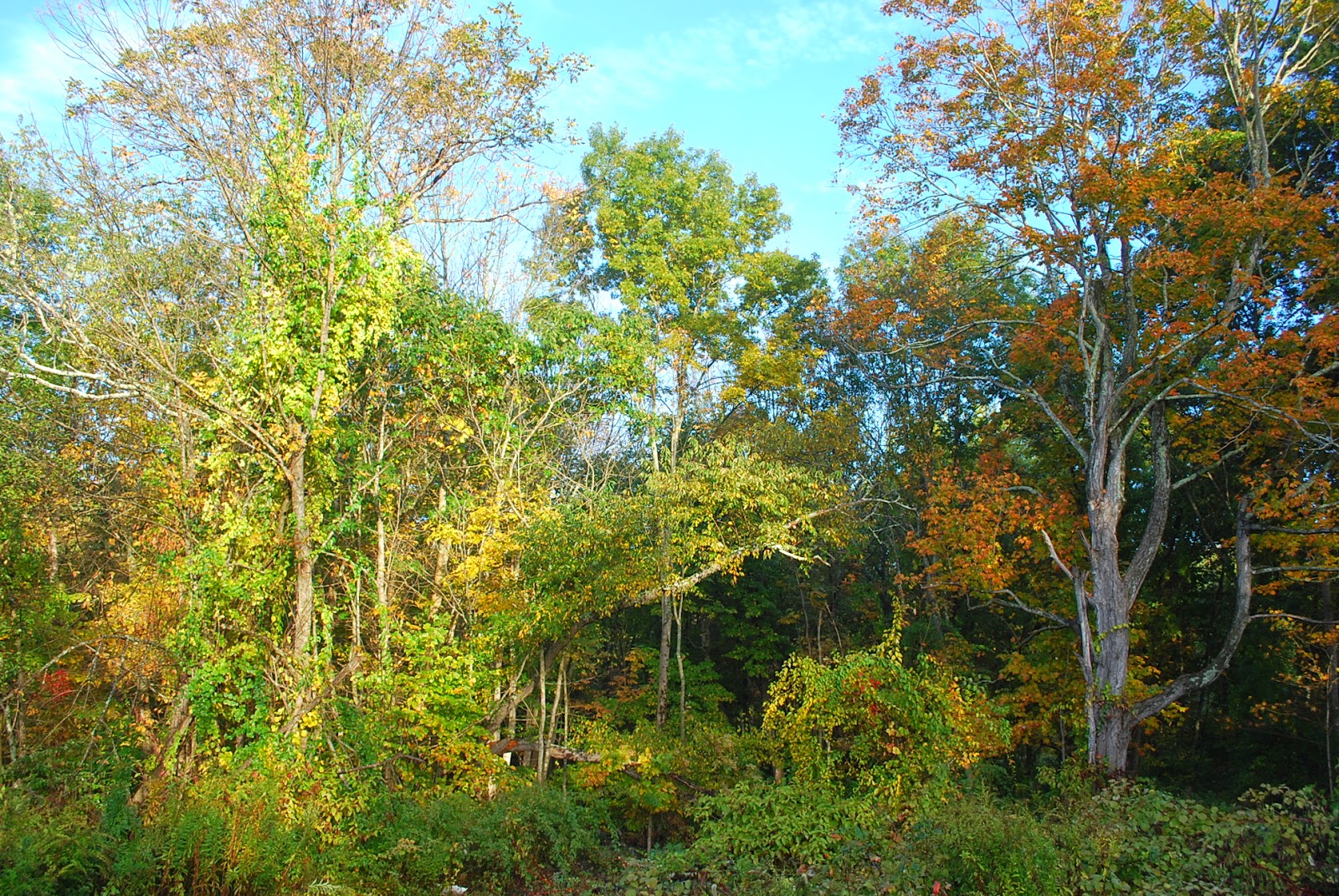ANNUAL REPORT
Well, it's been a year. I moved in around late October and it's amazing how much (and how little) has been done.
When I arrived on the first day (it was night), I couldn't get in the house (the lockbox with the key didn't open so I broke it), the electricity was off, the water didn't work, and the house smelled like mold. I practically slept on the dogs that first night.
The next day I turned on the electricity, got the pump working, and found that the water heater, toilet, and bath plumbing needed rebuilding. Oh, and the sink leaked. There was no dog fence, all the outbuildings were filled with household garbage, and the woods were filled with briars and poison ivy.
This was not really news, but it did cause me to wonder how deep it would get. And it would get deep.
Most of the leaves had already dropped and it would be three days before my moving truck would arrive. I didn't know my way around, had no idea where the grocery store was, had no stove or refrigerator, and though I went to visit my new workplace, I wouldn't start for a week as I needed to build a dog fence first. The briars and poison ivy would have to wait; the harshest winter in fifty years settled over New England, keeping us snowbound from December to March. April, in my case.
In addition, the only liquor store I found was manned by taciturn unfriendly people that treated me as it I was a foreign bacteria.
They still do. Or would, if I hadn't found another.
Careful readers will know that I eventually solved all these problems, though it took a good deal of the winter, all of the spring, and I'm still removing trash from the outbuildings.
But I have heat in most of my rooms, the dogs are contained and happy, most of the trash has been removed from the outbuildings, and though the briars still sway and growl on most of the property, I've managed to remove most of the poison ivy, briars, and bittersweet from the wooded areas within fifty feet of the edge of the yard.
Trust me, it wasn't easy. I have the scars to prove it.
This is what the area just behind the yard looked like when I started working on it in late May (though the pic was taken in early October this year).
Progress.
Note the vine on the side of the tree to the right. That's how big the poison ivy is.
The walls (actually animal pens from the early 18th century) being reclaimed and exposed.
Unfortunately, the insides of those walls (pens) are filled with broken glass and rusted steel, sometimes up to three feet deep. I'll get a front-end loader next year.
This is what the area behind the barn looked like; briars and raspberries, poison ivy and bittersweet. To you uninitiated, bittersweet is the bane of the Connecticut farm (it's the yellow stuff to the right). It grows as fast as bamboo, strangles everything it touches, and climbs high to the tops of trees in what seems like a matter of minutes. It's vines are sinewy and strong enough to make rope from, pardon the dangling preposition. It gets caught in your weedeater or brush cutter and requires continual removal from the cutter head with hand clippers or a sharp blade. It can only be killed with serious brush poison; Roundup won't even phase the stuff.
Behind the barn. This was the first area I cleared in May. It has been kept clear only by monthly cutting, yet still has new growth. My land is very fecund.
This was big deal; cutting through the briars to begin the foray along the property line. I hope to reach the corner by spring next year. The pond lies just beyond the rock wall at the end of the cut; briars crowd both sides.
One of the three stand of raspberries I intend to keep. The barn and tractor shed are in the background.
The hornets' nest, abandoned and disintegrating.
Though a lot of my time is spent getting rid of brush, this is an exception. It is a one hundred fifty year old boxwood salvaged from a restoration we are doing in North Stonington. I hope to have it live another 150 at the Standish Farm.
I hadn't carved a jack-o'lantern in nearly fifteen years, and I arrived too late in the season (and had more important things to do) to decorate for Halloween last year. This year, I decided, would be different. I took some of the stick-figure designs from Blair Witch, added small pumpkin heads, and got to carving. These will likely stay until the pumpkins rot. I added some desiccated fabric on the arms. More has been found in the barn and will be added later.
A ghost in the doorway?
Yep. Definitely a ghost.
That's a goat skull above the skeleton. With bulging eyes. The skull came from central Texas.
With all the fun of carving the jack-o lanterns, I stumbled across this huge cottontail yesterday while I set up the scarecrows and pumpkins. Its head was cleanly removed and sits under its chest. Big rabbit. But despite the decapitation, it was absolutely intact. What kind of predator does that (other than humans)?
This rabbit was found on the EXACT spot I almost stepped on the fisher cat last winter.
The 30-30 is loaded and ready.





























































